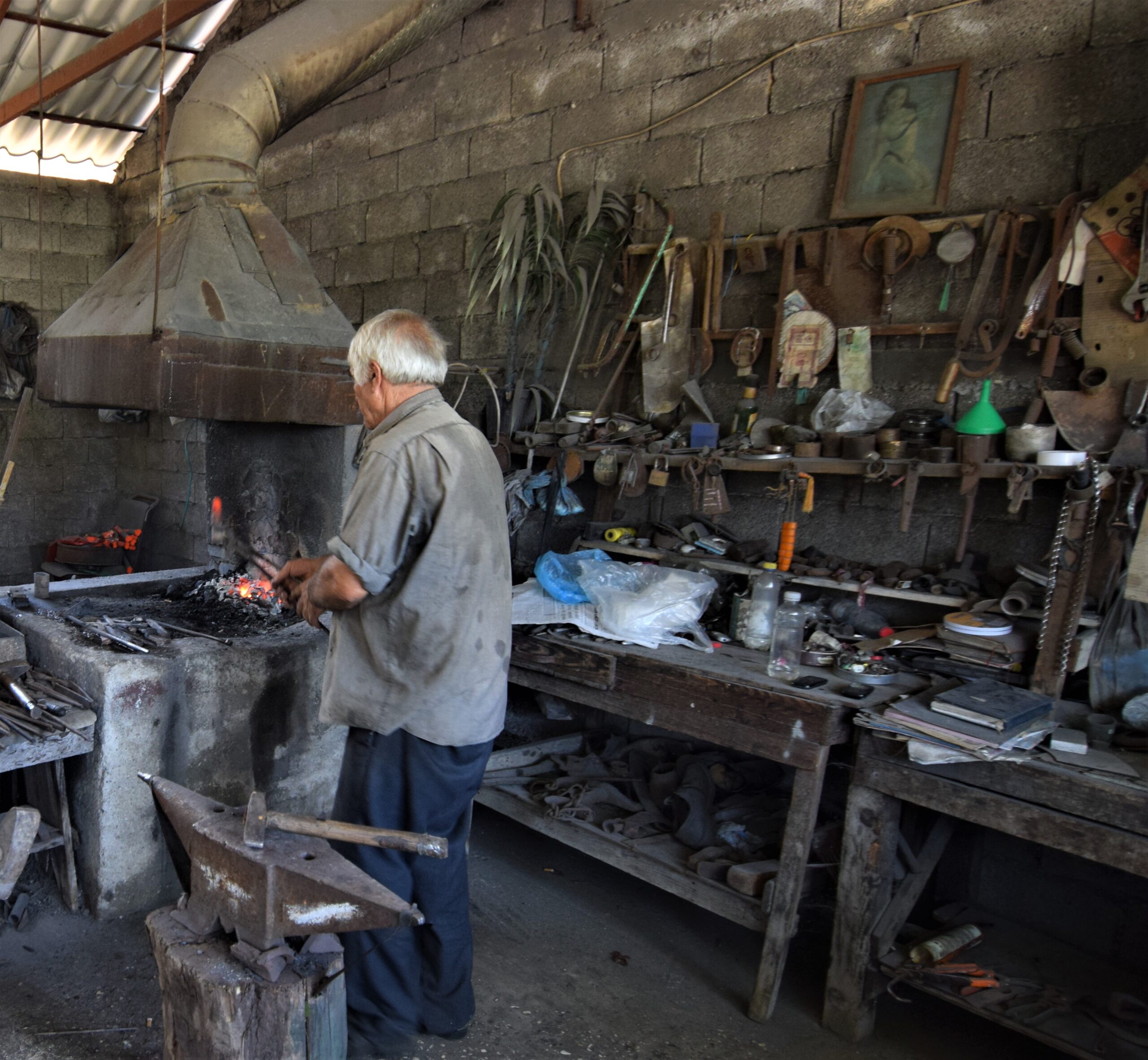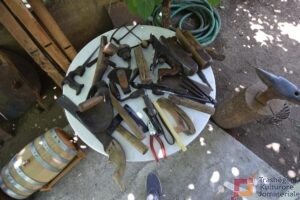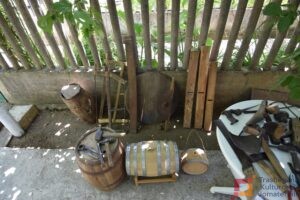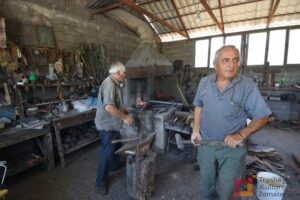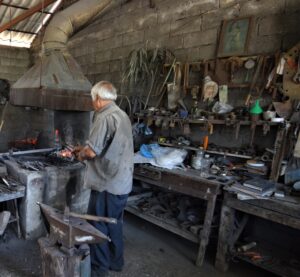The discovery and mastery of treating iron and other metals are native to this region empirically passed down from generation to generation since almost a thousand years ago. Such experience has been intricately imparted and practiced exchanging habits, knowledge, and theoretical and practical skillfulness of different human life spectrums. Actually, it is the natural, social, geographical environment and the like to influence human formation. Yet, even man as an active being, responds to this backdrop which fosters human emancipation through reality and everyday life, while this entire body of knowledge leaves a hallmark on human personality. This is how great masters and craftsmanship were born.
Ironworking as a craft has many secrets every craftsman should master. Each metal has its own mechanical properties – specific ones that a master (ustai) is familiar with. For example, the iron is heated and manipulated when it reaches a certain temperature so to produce a more easily and accurately forged ironwork.
Another process of metal is coloring or water processing so that the metal reaches the hardest texture possible. In the professional vocabulary, coloring is called proper metal tempering, which is also the very basis of the craft that requires years-long experience. A skilled craftsman should know and treat every type of metal given its specific properties. A skilled metalsmith is also distinguished by the variety, quality, and precision in the weight and shape of the tools he produces.
Dropulli province has quite a reputation for its good quality stone and its variety. Carving this type of stone requires tools (e.g. chisels, various hammers, emery abrasive, etc.) of high quality and workmanship. These tools are now only made by the metalsmith.
A skilled craftsman boasts to the customer by deeds not words. For example, after making a tool, pick, axe, claw hammer, etc., he takes a nail and passes it along the tool’s surface. If the nail is cut without leaving a mark on the tool metal, it testifies he is a real master. Obviously, the metalsmith’s craft is difficult, with the real value depending on the work and raw materials quality. As confirmed by an old saying: “Hey, it’s a matter of craft!”
For a metalsmith, it has always been and is habitual to wish a customer:
All the best and be strong!

